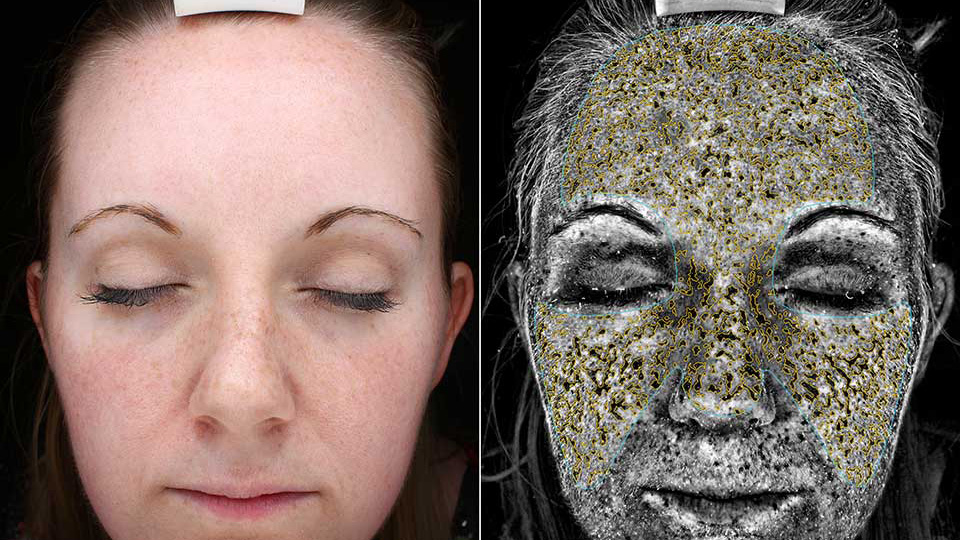
Photo credit: Environmental Working Group
Just because you can't see it doesn't mean it's not there.
That's the message behind the Environmental Working Group's Practice Smart Sun Campaign. The campaign — designed to teach us about the dangers of sun exposure — is meant to be educational, but we can't help but get a little freaked out at the photos at the forefront of the campaign.
The photos, taken with a Canfield UV camera, show the havoc that years of sun exposure can wreak on our skin. The UV camera cannot predict skin cancer, but it does show the key visual information that indicates damage from the sun, like wrinkles, brown spots, red patches and uneven texture. It can even show UV spots, which are “accumulations of melanin just below the surface of the skin.”
It's likely you have some of that going on with your skin right now, even if you can't see the damage on the surface. Skin cancer is one of the most common forms of cancer in the U.S., according to the Centers for Disease Control and Prevention. Malignant melanoma is also the number one cause of cancer death of women in the 20s and 30s.
Yikes.
The good news? Take photos like these as a wake-up call to get your sun act together, pronto. You've heard it before, but wearing sunscreen with a minimum SPF of 30 is vital, as is wearing sun protective clothing and hats when you're going to be exposed to sunlight for an extended period of time.
As for the damage you've already inflicted on your body's biggest — and arguably most important — organ? You can fix it with a variety of treatments, including IPL/BBL therapy, retinoids and laser treatments.
However you treat it, just make sure you're doing your best to keep your skin healthy for the long haul.
More on skin care
Skin care tips for each part of your body
CLA and retinols: How these ingredients fight aging
6 Lifestyle changes to promote super-healthy skin